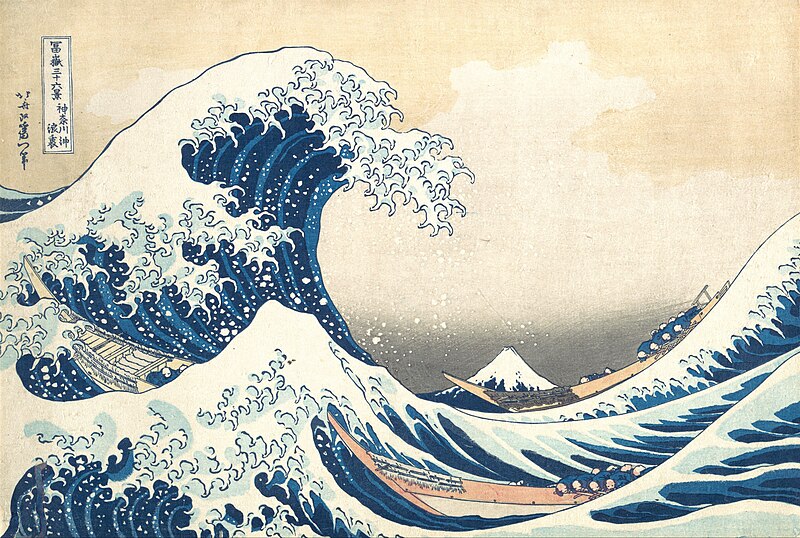It’s somewhat surprising to me that scientific acceptance of the rogue wave phenomenon only dates back to the mid 1990s. So humanity has colonized every continent and established international shipping lanes for trade and travel, but as a species we never believed stories of big goddamn random waves until recently?
https://en.wikipedia.org/wiki/Rogue_wave
Here there be monsters. I suppose the low survivability of such events kept them in myth, with the occasional eyewitness rendered incoherent from PTSD. But still, the 1990s?
So why was I thinking about rogue waves? I dunno. It was one of those internet rabbit hole kind of days. Because apparently I needed to scare myself away from ever getting on a ship, aside from the more obvious reasoning: trapping myself in the ocean with a bunch of people. No thanks.

But it also triggered a vivid memory. As a kid, I took an interest in natural disasters. Extreme climatology became an independent subject of study for me, perhaps from living in Tornado Alley. What caused these terrifyingly lethal events? And, how does one avoid them? By the end of elementary school, I was well-versed on tornado and tsunami formation, and how to recognize their impending appearance. I had books on the subjects. In 4th grade. Yes.
And on one summer evening I was experimenting with wave formation in the collapsible swimming pool (I had a lonely childhood). It was one of those rubber-bottomed things with semi-rigid sides. Only 2-3 feet deep, though it always slumped slightly and never filled to capacity quite right. But I could push the sides and turn it into a wave pool and simulate the sinking of various objects based on this wave action. Single waves impacted the opposite side and sloshed around the circular perimeter. Rhythmic wave creation caused predictable patterns: sine waves and standing waves. Inconsistent wave creation led to chaotic results. And as I was a kid, a narrative always accompanied my experiments. A fleet of warships encountered a typhoon! An enemy bomber squad appeared overhead! All hands to stations! Abandon ship! And I would dramatically belly-flop into the center.
In this particular experiment, I generated waves in one location, then a few feet away, then back to the first spot, and I noticed a pattern. Waves generated some number of degrees apart converged across the pool. I continued the experiment by generating waves in different locations as I evenly circumnavigated the pool. My thought was that this would create some sort of water displacement in the middle of the pool that would replicate sudden tsunami formation.
Nothing exceptional occurred, and I lost interest. But before I left, and as the water appeared to settle into a waveless pool once again, a single wave rose unexpectedly towards one side of the pool, traversed the diameter, and crashed onto the opposite wall, splashing over the side. Then a second wave appeared in the same spot, and just as before, followed the prior wave’s same path. The waves were of significant height in comparison to the otherwise placid pool of water, and their sudden appearance, in complete contrast to the present equilibrium and without further input on my part, startled me. Actually, the event rather disturbed me, as it lacked any reasonable explanation.
Excited and needing some form of validation, I ran inside to explain the event to my dad, claiming that I had inadvertently created a tsunami in the pool. Of course, without much context to go on, he gave me a generic acknowledgment and that was the end of that. And many times thereafter, when the pool was set up again, I attempted but failed to recreate it. And I always wondered what had happened that day.
Through some form of random and predictable events, I had created a rogue wave situation (hence the name). But as constructive interference is easily explained in basic physics, it didn’t account for why I was able to create what I had by rotating around a circular body of water. Ultimately, I’ve come to accept the Draupner wave event as the explanation – a rouge wave whose empirical documentation led to fluid dynamic studies that ultimately recreated the event. The explanation: nonlinear convergent wave trains in crossing sea conditions (tested at varying angles of intersect). Or more simply: bursts of waves at different angles making big waves when they meet.
https://en.wikipedia.org/wiki/Rogue_wave#The_1995_Draupner_wave
The pool had seemingly been still, but my last waves, or perhaps waves reflected from the pool sides, had intersected at just such an angle after I had stopped generating new waves. And the result was those two waves, significantly greater in amplitude than anything that should have been remaining in the settling water, formed from that improbable intersection. It was an odd experience to see the pool come to life on its own, and very difficult to explain sufficiently so that someone else might visualize.
It’s no wonder that sailors were a superstitious lot. No one believed my story either.
–Simon
